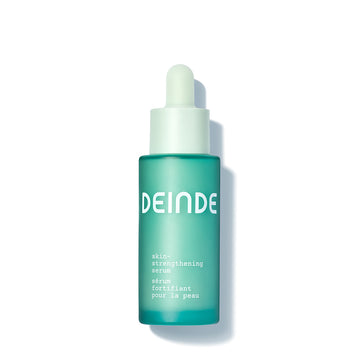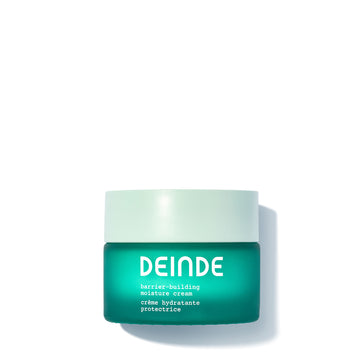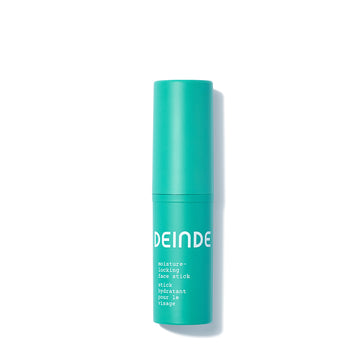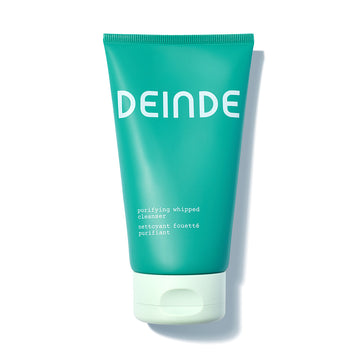
How To Build a Preventative Skincare Routine
Building a skincare routine can seem like a big undertaking. You may go into the process feeling “out of your league” when it comes to picking products and laying out an effective regimen. Then, of course, there are considerations about how your skincare will relate to your skin tone, makeup, allergens, and environment. It can be a lot to consider all at once.
However, with the right understanding of your skin’s needs (and what everyone’s skin needs biologically!), you can easily create a routine that promotes healthy, radiant skin. You don’t need much. In this guide, we’ll go over the different categories of care that benefit most people. Of course, as you build your routine, you’ll want to make tweaks along the way to tailor your skincare routine for your specific skin type and concerns.
A skincare routine does not have to overtake your life (and omg please don’t ever let it get to that place!). Rather, an effective skincare routine should help your skin to stay soothed against everyday environmental stressors, helping your skin to stay strong against inflammation throughout your life. A workable skincare routine helps to prevent inflammaging.
First things first: Know your skin’s status quo
Before getting in too deep with building a skincare routine, it’s important to understand the uniqueness of your skin and what you want from your products. Generally speaking, skin types tend to fall in four-ish categories: oily skin, dry skin, combination skin, or sensitive skin. While these categories are not binding (or mutually exclusive depending on the day!) understanding where you fall on the spectrum can help you to make better decisions when you build your skincare routine.
Do your skin concerns tend to be about excessive oiliness or acne? If so, you probably have oily-leaning skin. Do you more often worry about dryness or reactivity? You might have dry, combination, or sensitive skin.
Once you have a baseline understanding of your skin’s usual state, you can begin to plan out the steps of your regimen, which can be broadly categorized in four ways: cleansing, treating, moisturizing, and protecting.
Step 1 | Treat your skin like a blank canvas on the daily.
It’s not an accident that people often say “I feel subhuman” on the days they don’t have time to cleanse their face properly. Not only is it a foundational part of skin hygiene, but it also helps rid the skin of buildup and dead skin cells and encourage cellular regeneration in the process. If not cleansed, then is your skin really living?
However, in cleansing the skin, people often apply one-size-fits-all methods and/or products to their skin without tending to their barrier’s unique needs. The reason this matters is because the skin barrier is the ultimate shield against external stressors and toxins, so when our barriers are compromised, our skin doesn’t get to be its most authentic, radiant self.
No matter what skin type you have—oily, dry, acne-prone—choosing a facial cleanser that helps to maintain your skin barrier’s natural pH level through gentle yet effective ingredients is essential to a healthy complexion.
Cleansers Per Skin Type
Oily/Acne-Prone: Opt for a foaming or gel cleanser containing liquid exfoliants like salicylic acid to control oil production and prevent breakouts.
Dry/Sensitive: Look for a gentle, hydrating cleanser with soothing ingredients like hyaluronic acid or ceramides to cleanse without stripping away moisture.
Combination: Use a pH-balanced gentle cleanser like DEINDE’s purifying whipped cleanser that effectively removes impurities without over-drying or irritating the skin.
Step 2 | Figure out your stance on exfoliation.
Exfoliation is like cleansing in that it is all about removing gunk and dead skin cells while encouraging skin cell turnover. However, exfoliation tends to take on a “deeper dive.” Depending on your skin, you may want to incorporate exfoliation with physical exfoliants or chemical exfoliants into your routine 2-3 times per week.
Importantly, exfoliation is usually not something you’ll do daily. As you build your skincare routine, you will want to evaluate whether you are over-exfoliating—leading to irritation and sensitivity—or whether you need to exfoliate at all. Generally, chemical exfoliants tend to be more gentle than the physical or mechanical route.
There are a few types of ingredients you may see in products while you’re building out your skincare routine:
Alpha Hydroxy Acids (AHAs) such as glycolic acid and lactic acid are usually suitable for all skin types. They tend to help with improved texture, reduced appearance of hyperpigmentation, and support for collagen production.
Beta Hydroxy Acid (BHA) like salicylic acid, is a good exfoliant choice for oily, acne-prone skin. It gets down (and dirty)... deep into pores, unclogging them and potentially reducing overall inflammation.
Again, exfoliating is not a mandatory part of building out a skincare routine, but it definitely can help assist your cleansing routine.
Step 3 | Get the most out of your serums.
Using serums is not, in any way, a novel concept. However, as it has become super mainstream to just “add in a serum,” it has become challenging to know first, what serums actually do, and secondly, what kind of serum your skin actually needs depending on the day or occasion.
In general, serums are meant to be used in the “treatment” portion of your skincare routine. They are usually concentrated formulations packed with active ingredients targeted to address specific skin concerns.
Here are some active ingredients we always turn to for effective “serum-ing”:
Hyaluronic Acid: Ideal for all skin types, hyaluronic acid attracts and retains moisture, plumping the skin and reducing the appearance of fine lines and wrinkles.
Vitamin C: A potent antioxidant, vitamin C serums can help brighten the complexion, fade the look of dark spots, and support skin during exposure to environmental damage.
Retinol: Known for its ability to support a youthful-looking complexion, retinol may help support proper collagen production, reduce the look of fine lines and wrinkles, and improve skin texture. Although retinol is an incredible active ingredient, people with sensitive skin should potentially alternate the days they use retinol so as to avoid irritation, and never combine it with an AHA! SPF protection is essential when using retinol.
Niacinamide: Suitable for all skin types, niacinamide helps to support balanced oil production, minimize the look of pores, and improve overall skin tone and texture.
Nargenin: As one of the most potent polyphenols out there, Naringenin has become a skincare all-star and is one of DEINDE’s proprietary hero ingredients in our skin-strengthening serum that is suitable for all skin types and helps to strengthen the skin barrier so as to better support your skin against the signs of inflammaging.
Apply serums after cleansing and before moisturizing to allow maximum absorption of active ingredients into the skin.
Step 4 | Lock in your gains with a reliable moisturizer.
When it comes to fighting inflammaging—or the chronic inflammatory stress that your skin endures across a lifetime—one of the best tools you can build into your toolkit is a reliable moisturizer.
Moisturizing is crucial for maintaining skin hydration, supporting your skin barrier, and improving skin elasticity. A good moisturizer will target dryness and uneven skin tone.
DEINDE’s moisture-locking face stick is the perfect supplement to your pre-existing moisturizing routine. Our one-size-fits-all barrier boost can be easily applied to any skincare routine. Here are the key ingredients in the moisture locking-face stick that make it extra-hydrating:
+ Naringenin: Naturally found in polyphenols like grapefruit, Naringenin targets all the visible signs of inflammaging by strengthening skin and sustaining firmness and elasticity
+ Squalane: A lipid that binds moisture to the skin for a softer, smoother, lightweight feel.
+ Ceramide NP: An essential lipid for binding cells together, locking in moisture, and fortifying the skin barrier.
As you build out your skincare routine, start getting familiar with moisturizing right after you apply serums, whether in the morning or at night.
Step 5 | Protect it all with a broad-spectrum SPF.
Once you’ve outlined your skincare routine for cleansing, treating, and moisturizing your skin, you’ll want to turn your attention to either chemical or mineral sunscreen. Sun protection is crucial for protecting your skin from harmful UV rays, which can contribute to signs of sun damage like dark circles and pigmentation issues.
Broad-spectrum sunscreens are the best protection for inflammaging because they protect against both UVB and UVA rays. Protection against UVB rays means you’re protecting against the immediate damaging effects of a sunburn. When you’re addressing UVA rays, you are helping to prevent skin aging, wrinkles, and deep skin damage. Therefore, getting a broad-spectrum sunscreen (which addresses both UVB and UVA rays) is essential to address all the effects of the sun.
When it comes to your skincare routine, you probably want to apply at least SPF 30 or higher every morning after you complete the other steps. Your routine does not need to change much between days, even as the weather changes. However, if and when you anticipate getting a lot of sun, be sure to reapply sunscreen throughout the day.
Oh, and one more thing: lightweight and soothing are key criteria for choosing a sunscreen you’ll want to put on every day.
Step 6 | Give your skin a spa day every once in a while.
In addition to your daily skincare routine, incorporating treatments and face masks 1-2 times a week can help address specific concerns and give your complexion an added boost.
Below are some mask options for when your skin needs a little extra loving:
Clay Masks: Ideal for oily/acne-prone skin, clay masks help to absorb excess oil, unclog pores, and mattify the skin. Clay masks are great for when your skin is feeling slightly inflamed, or if you’ve been exposed to external stressors like environmental pollutants.
Sheet Masks: Infused with concentrated serums and essences, sheet masks provide intense hydration, brighten the complexion, and improve skin texture. Look for sheet masks that leverage clean ingredients, staying away from parabens, sulfates, PEGs, and other endocrine disruptors.
Overnight Masks: Hydrating overnight masks nourish and repair the skin while you sleep, leaving it soft, smooth, and revitalized by morning.
While it can be tempting to want to “mask” often, keep in mind that when it comes to your skin, there can be too much of a good thing. Trying to do all the things can actually over-treat the skin and weaken the skin barrier, robbing the skin of essential oils and nutrients.
Step 7 | Tweak, tweak, and retweak.
We wish we had better news to report…. but it turns out that building a skincare routine is not a one-and-done sort of thing. Building a skincare routine is an ongoing process that you will continue to refine throughout your life. That’s why it’s so important to choose products and ingredients that benefit the long-term health and vibrancy of your skin.
As you continue to customize your skincare routine, take note of any responsiveness, sensitivity, or stress that certain processes have on your skin. When in doubt, you can always dial back your routine down to the essentials: cleansing, treating, moisturizing, and protecting.
Just keep building.
It takes time for skincare products to begin showing results, so be sure to take your time as you put together a routine. You may want to give yourself 4-6 weeks after making an adjustment to your routine in order to see whether it is working appropriately.
On that note, never underestimate the importance of consistency! Skincare routines are routines for that exact reason. Do your best to maintain the same routine every day / week so that you can better judge what’s working and what’s not working. If you shift your routine too often, you may not be able to isolate the impact that different products have on your skin.
Building a skincare routine is a personal journey, so bring all that main character energy you’ve got to the project. Although there is a wealth of science and research about the most efficacious ways to soothe your skin against inflammaging, you should always follow your own instincts. With the right adaptations and consideration, you can maintain the healthy, radiant skin that you want—and for a long time to come!
Sources:
An Exploration of the Use and Impact of Preventive Measures on Skin Cancer | PMC
Retinoid or retinol? | American Academy of Dermatology
The science behind skin care: Cleansers | NCBI
Skin anti-aging strategies | PMC








